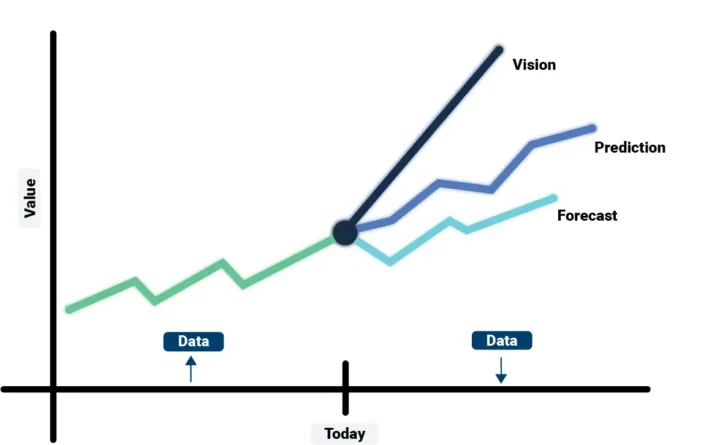5 tips of how to implement predictive planning successfully
Reimagine your process
When implementing predictive planning it’s usually a great opportunity to also reimagine the planning process. The immediate effect will often be time saved for key persons involved in the process, especially as the predictions are often tied to various levels of automation. Look at the bigger picture early in the process and decide what this saved time should be spent on. That can in turn lead to valuable insights when designing the solution.
Predictions tied to automation can enable both more frequent forecasts as well as a higher level of detail. Take these opportunities in to account but stay focused on what the business actually needs and avoid the trap of implementing very frequent highly detailed forecasts just because it can be done.
Usefulness trumps accuracy
All predictive models approximate the reality more or less accurately, but it’s important to remember that the goal is not to develop the model that delivers the highest possible accuracy. Instead, the goal is to develop the most useful model that will add most value to the financial planning process.
This might seem like a contradiction, but forecasters will typically value and use a predictive model more if they understand it. A model that strives to maximise accuracy often becomes a “black box” only understandable to data scientists. For an FP&A expert tasked not only with creating a forecast but also to be able to answer the question “Why?” such a model is less than helpful.
On the other hand, basic predictive models, while easy to understand, might lack accuracy. The challenge is to find the correct balance between accuracy and usefulness, while making sure that the users fully understand how the model works.
Involve the organisation
It´s easy to use prediction and automation to centralise the process, but this is in most cases a mistake. Instead design clear and easy to use predictive models and involve key stakeholders in the organisation.
This has two clear advantages. First it creates accountability and a sense of ownership over the data which in turn drives a commitment to achieve or beat the forecast. Second these key stakeholders with their intimate knowledge of their respective fields can often give valuable input to the predictive model, such as if a store will be closed for renovation, or even point out when the prediction is misleading and might need tweaking.
Data is the key
Naturally, qualitative data is the prerequisite for a successful predictive planning implementation. Generally speaking, a minimum of 4 years of historical data is required to accurately detect trends and seasonal patterns.
As is often the case this amount of historical data is not available for every key KPI, at least not with sufficient data quality. In these situations, an incremental approach is recommended, start with implementing your predictive models where the data is available while at the same time expanding your data capture process to enable prediction of additional metrics in the future.
One step at a time
Don’t try to implement predictive functionality for every part of the forecast at the same time, this will only risk delaying any added value for years while waiting for all the necessary data to be collected and verified. Instead, find a clear use case within the organisation where predictive planning could add real value and where the necessary data is already at hand, for example a significant KPI, an income stream or a cost measurement. Start with implementing predictive algorithms for this case. This way you will quickly add some value to your process while at the same time learning valuable lessons. This approach will also let you evaluate the potential of predictive planning and decide how you want to apply it while striving to achieve your optimal planning process.




